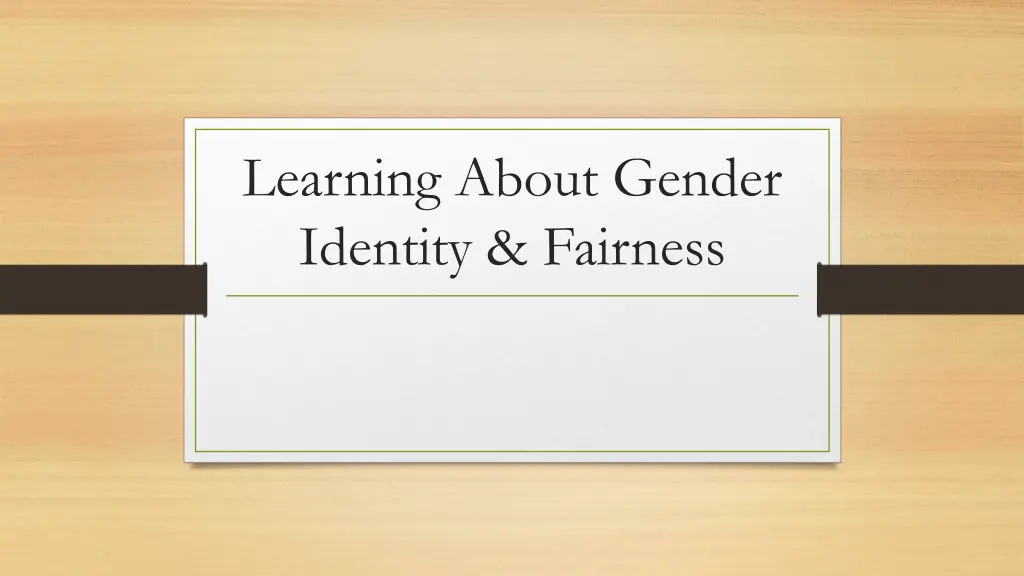
Understanding Children's Gender Identity Development
Explore children's experiences and understandings of gender identity, including gender anatomy and roles. Learn strategies to help children understand gender anatomy and identity, and expand their gender behaviors and attitudes.
Download Presentation

Please find below an Image/Link to download the presentation.
The content on the website is provided AS IS for your information and personal use only. It may not be sold, licensed, or shared on other websites without obtaining consent from the author. If you encounter any issues during the download, it is possible that the publisher has removed the file from their server.
You are allowed to download the files provided on this website for personal or commercial use, subject to the condition that they are used lawfully. All files are the property of their respective owners.
The content on the website is provided AS IS for your information and personal use only. It may not be sold, licensed, or shared on other websites without obtaining consent from the author.
E N D
Presentation Transcript
Learning About Gender Identity & Fairness
Childrens Experiences and Understandings of Gender Identity Gender identity includes both gender anatomy (physical characteristics) and gender role Our environment teaches us about male and female gender expectations By age 2, children begin to notice physical differences and begin to describe themselves as boys or girls By age 3, children have ideas about behaviors, activities, and toys that go with gender Many preschoolers are not yet clear about what actually makes them a boy or a girl
By age 3, many children have already learned discomfort or embarrassment with the anatomy that makes them a girl or a boy Children are influenced by others attitudes about gender behavior Children may experience emotional conflict about acting differently from societal norms Acknowledging children s nonsexist behavior provides further support for their choices (girls can be firefighters) and do follow up activities When teachers model a variety of roles and interests, they encourage and support children in exploring learning experiences
Strategies for Helping Children Understand Gender Anatomy and Identity Talk with children about gender anatomy Be prepared for giggling handle it by being clear (he was born with a boy body, and no matter what clothes he wears, he still has a boy body) As part of forming a healthy gender identity, all children need some language for talking about how the bodies of boys and girls differ. Using terms such as vagina, penis creates a common educational language Some families and teachers are comfortable with such terms as gina, or peepee
Read books about the body to familiarize children with all aspects of it Work sensitively with families find out how they explain the differences between male and female Explain the families why you do activities about gender anatomy Explore which activities the family can accept
Expanding Childrens Gender Behavior and Attitudes Help children try out new learning centers Consider putting the block area next to the dramatic area Encourage girls to play with block and boys playing in the dramatic play area Model new learning skills and sharing in the classroom (woodworking) Display pictures of women and men doing the same job Invite families to talk about jobs they are doing
